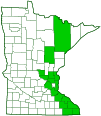Cleland’s evening primrose
(Oenothera clelandii)
Conservation • Wetland • Description • Habitat • Ecology • Use • Distribution • Taxonomy
Description |
||
Cleland’s evening primrose is a 16″ to 40″ tall, erect, biennial forb that rises from a taproot. In the first year it forms a 3″ to 6″ wide rosette of basal leaves. In the second year it sends up a flowering stem. It usually dies after bearing fruit once. The stems are erect or ascending, seldom branched, light green, and densely covered with white, appressed hairs. The leaves are alternate, ascending to widely spreading, linear to narrowly lance-shaped or linear-oblong, 1¾″ to 3⅛″ long, and ¼″ to ¾″ wide. The upper surface is medium green and sparsely covered with short, white, appressed hairs. The lower surface is paler green and densely covered with short, white, appressed hairs. The margins are mostly untoothed, though sometimes there are barely perceptible teeth near the tip. The inflorescence is a dense, 4″ to 12″ long spike of numerous flowers at the end of the stem and branches. The central axis of the stalk (rachis) is densely covered with short, white, appressed hairs. The individual flowers are stalkless. What appears to be a stalk is, in fact, an elongated ovary surmounted by a hypanthium, a floral tube formed by the fused bases of the sepals, petals, and stamens. The floral tube is yellowish-green and covered with straight, stiff, sharp, appressed hairs. When in bud it is ⅝″ to 1 3 ⁄16″ long, widely spreading near the rachis then strongly ascending, with the bud held upright. When in bloom the floral tube elongates, straightens somewhat, and the flower is held at about a 45° angle. The flowers are crowded and ½″ to 1¼″ in diameter when fully open. There are 4 green sepals and 4 yellow petals. The sepals are linear, 3 ⁄16″ to ⅝″ long, and strongly bent backward along the hypanthium. The petals are yellow, broadly elliptic or egg-shaped, 3 ⁄16″ to ⅝″ long, and usually pointed at the tip. There are 8 equal stamens, 4 united styles, and a distinctive, 4-lobed, cross-shaped stigma. The flowers open around sunset and close by noon. They change from closed to fully open in just one minute. They are pollinated by hawk moths or sphinx moths, which feed on their nectar at night. The hypanthium, petals, and sepals are deciduous, withering and falling off when the fruit is formed. The fruit is a cylinder-shaped, ⅜″ to 11 ⁄16″, 4-celled capsule. The capsule is round in cross section, 4-sided with rounded angles, curved near the base, and densely covered with white, appressed hairs. Each cell of the capsule contains two rows of dark brown, egg-shaped seeds. |
||
Height |
||
16″ to 40″ |
||
Flower Color |
||
Yellow |
||
Similar Species |
||
| Fourpoint evening primrose (Oenothera rhombipetala) flower sepals are much larger, ⅝″ to 1″ long. The flower petals are much larger, ⅝″ to 1″ long. | ||
Habitat |
||
Dry soils. Prairies, fields, roadsides, and waste places. Full sun. Sandy soil. |
||
Ecology |
||
Flowering |
||
June to October |
||
Pests and Diseases |
||
|
||
Use |
||
|
||
Distribution |
||||
|
Sources |
|||
| 3/24/2023 | ||||
Nativity |
||||
Native |
||||
Occurrence |
||||
Common |
||||
Taxonomy |
|||
| Kingdom | Plantae (Plants) | ||
| Division | Tracheophyta (Vascular Plants) | ||
| Subdivision | Spermatophytina (Seed Plants) | ||
| Class | Magnoliopsida (Dicots) | ||
| Order | Myrtales (Myrtles, Evening Primroses, and Allies) | ||
Family |
Onagraceae (Evening Primrose) | ||
| Subfamily | Onagroideae | ||
| Tribe | Onagreae | ||
Genus |
Oenothera (Evening Primroses, Sundrops, and Beeblossoms) | ||
| Section | Oenothera | ||
| Subsection | Candela | ||
Subordinate Taxa |
|||
|
|||
Synonyms |
|||
Oenothera heterophylla var. rhombipetala Oenothera rhombipetala |
|||
Common Names |
|||
Cleland’s evening primrose lesser four-point evening primrose sand evening-primrose |
|||
The family name refers to the flowers which are partially to fully closed during the day, open in the evening, and close at noon. The plants are pollinated by hawk moths and sphinx moths, which feed on their nectar at night. |
|||
Glossary
Hypanthium
A cup-like tubular structure of a flower formed from the fused bases of sepals, petals, and stamens, that surrounds the pistil. Its presence is diagnostic of many families, including Rose, Gooseberry, and Pea.
Linear
Long and narrow with parallel sides, as in a blade of grass.
Rachis
The main axis of a compound leaf, appearing as an extension of the leaf stalk; the main axis of an inflorescence.
Stigma
The portion of the female part of the flower that is receptive to pollen.
Visitor Photos |
|||||
Share your photo of this plant. |
|||||
| This button not working for you? Simply email us at info@MinnesotaSeasons.com. Attach one or more photos and, if you like, a caption. |
|||||
|
|||||
MinnesotaSeasons.com Photos |
|||||
Plant |
|||||
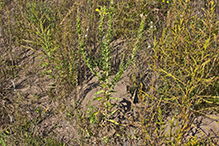 |
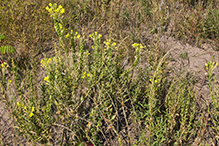 |
||||
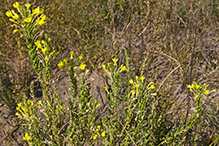 |
|||||
Inflorescence |
|||||
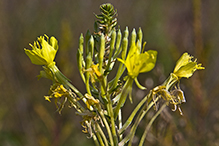 |
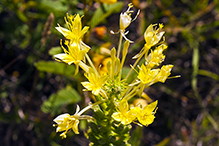 |
||||
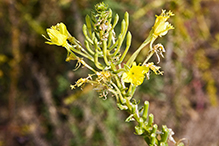 |
|||||
Flowers |
|||||
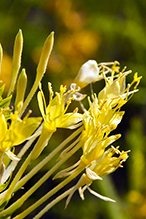 |
|||||
Infructescence |
|||||
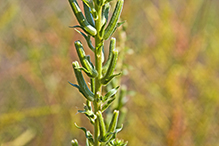 |
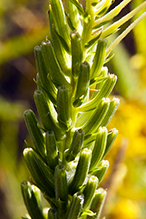 |
||||

Slideshows |
||

Visitor Videos |
|||
Share your video of this plant. |
|||
| This button not working for you? Simply email us at info@MinnesotaSeasons.com. Attach a video, a YouTube link, or a cloud storage link. |
|||
Other Videos |
|||

Visitor Sightings |
|||||
Report a sighting of this plant. |
|||||
| This button not working for you? Simply email us at info@MinnesotaSeasons.com. Be sure to include a location. |
|||||
|
|||||
MinnesotaSeasons.com Sightings |
|||||

|
Created: Last Updated: © MinnesotaSeasons.com. All rights reserved. |
